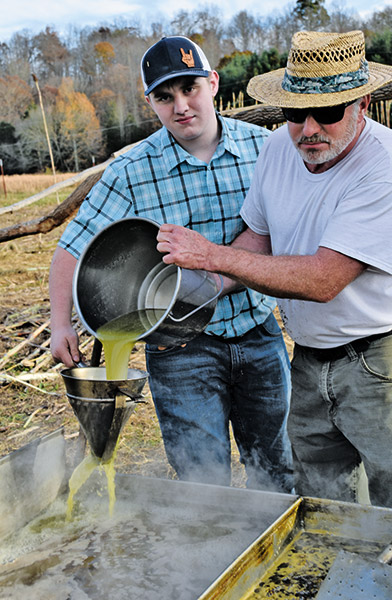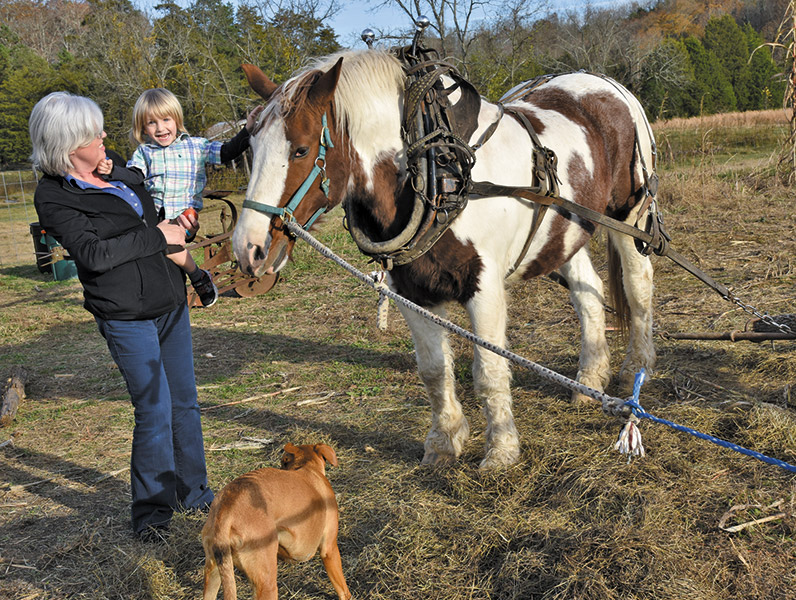Bobby Stooksbury and the art of making syrup from sorghum cane
Bobby Stooksbury makes sorghum syrup on his farm in Andersonville the old-fashioned way – using his spotted draft horse Andy and the expertise he’s developed over 30 years of honing his craft.
The kind of sorghum molasses he makes from the sorghum cane he grows on this farm has been an Appalachian tradition for centuries, and Stooksbury shows it off both on his farm at 514 Park Lane and at the Museum of Appalachia on Andersonville Highway every fall.
He’s opened the operation on his farm to visitors every Saturday this fall, inviting people to watch Andy walk around in circles in a harness to power the cane mill, which grinds the stalks to extract their sweet juice into a bucket underneath the mill.
That sorghum cane juice then goes to his nearby wood-fired cooker, where it’s slowly boiled down to make the syrup, which he bottles and sells for $10 a bottle as “Gooseberry Hollow Sorghum Syrup.”
It takes 10 gallons of the juice to make a gallon of the syrup, he said.
The sorghum syrup, which is often called molasses, actual differs from regular molasses in that it comes from sorghum cane, which grows easily in the Appalachian climate, Stooksbury said.
Regular molasses, however, is a byproduct of making sugar, and comes from sugar cane, which does not grow in the cooler climate of Appalachia. It’s grown in more-temperate climates, such as from Louisiana down into the Caribbean area.
The syrup is great for biscuits and to sweeten cookies and other treats, Stooksbury said. At his farm, he sells the syrup along with soft sorghum cookies made by Alan Conrad. The syrup also is used to make sorghum lollipops, which he also sells along with the syrup and cookies.
“We make about 100 gallons of the sorghum syrup every year here on the farm,” Stooksbury said last Saturday afternoon as he stirred the boiling sweet product over the fire.
Nearby, Kyle Buckner was feeding cane stalks into the mill with Andy walking around him in the harness.
The horse walked slowly and softly to turn the mill, taking orders to start or stop from Buckner.
Occasionally, visitors would come up to give Andy an apple or two as a treat, something Stooksbury encourages on his Facebook page for the farm.
The syrup takes about three hours to make from the raw cane juice, and one acre of sorghum cane can make up to 160 gallons of the syrup, he said.



